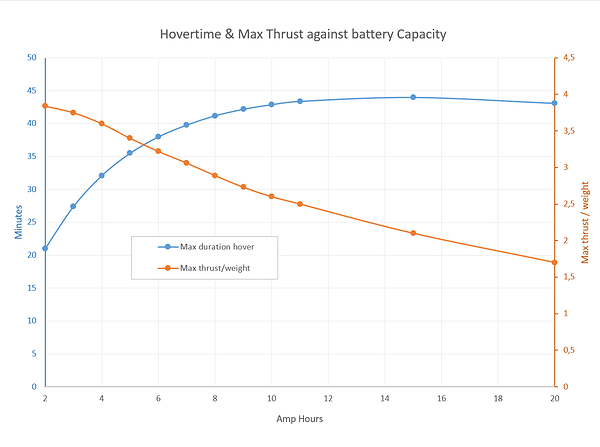

Here, the propellers convert mechanical energy into thrust.Īs we learned in our previous article, mechanical power is the product of torque and rotation speed. 2) What Do We Mean by Efficiency?Įfficiency is the ratio of the output divided by the input. We can vary parameters such as pitch, size, profile, material, and brand to find our most efficient propulsion system. We are looking for the most efficient propeller producing 1.9 N of thrust that has a maximum size of 6 inches, and can achieve 3.8 N of peak thrust. Racing quads will have a much higher maximum thrust to weight ratio. Keep in mind this is just a recommendation. To keep a good control authority, the maximum thrust achievable by the propeller should be about twice the hovering thrust. Here, our drone weighs 777g, so we need a total thrust of 7.6N to hover or 1.9N per propeller.įigure 2: Drone weight and hover thrust requirements At hover, we can assume that the combined thrust of the propellers is equal to the drone’s total weight.įrom this assumption and with the weight of the drone, we can deduce the thrust required by each propeller in order to maintain hover. The rotation of the propellers generates thrust and allows the drone to rise and maintain flight. A drone’s weight is the product of its mass times gravity and drag is the force resisting the drone's motion through the air, which is dependent on reference area, air density and flow velocity. In order for a drone to become airborne, it must overcome its weight and drag. The first step is to understand how a drone can fly and take-off. With this current design, our flight time is ≈ 4 minutes.

The first unoptimized version of our quadcopter has: To better illustrate the process, we will use the Otus Quadcopter as an example, though this method is applicable to any flying UAV. Additionally, we will optimize a multi-rotor that is mostly hovering (our drone is neither a racing drone nor a competition drone).įurther reading: Drone Design Calculations and Assumptions First, let’s assume that the drone already flies, so you have an existing design from which you know the weight and the battery size. The optimization process is a loop, so we need to start by making some assumptions.
#QUADCOPTER BATTERY TIME CALC HOW TO#


 0 kommentar(er)
0 kommentar(er)
